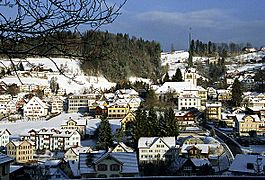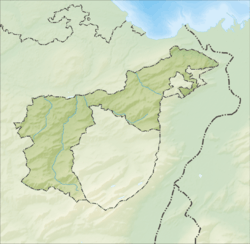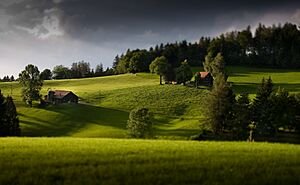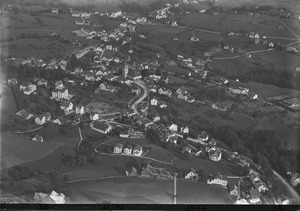Teufen, Appenzell Ausserrhoden facts for kids
Quick facts for kids
Teufen
|
||
|---|---|---|
 |
||
|
||
| Country | Switzerland | |
| Canton | Appenzell Ausserrhoden | |
| District | n.a. | |
| Area | ||
| • Total | 15.25 km2 (5.89 sq mi) | |
| Elevation | 837 m (2,746 ft) | |
| Population
(Dec 2020 )
|
||
| • Total | 6,364 | |
| • Density | 417.31/km2 (1,080.8/sq mi) | |
| Postal code |
9053
|
|
| Surrounded by | Bühler, St. Gallen (SG), Schlatt-Haslen (AI), Speicher, Stein | |
Teufen is a town in Switzerland. It is a municipality located in the canton of Appenzell Ausserrhoden.
Contents
History of Teufen
Teufen was first mentioned in official records in 1272. Back in 1300, it was a very small place with only five farms.
In 1525, a big decision was made. Each local area could choose if they wanted to stay Catholic or become Protestant. This led to a split in the Appenzell region in 1597. Teufen decided to become Protestant. However, the Wonnenstein Friary, a religious building nearby, stayed Catholic. In 1870, the land around the Friary became a separate area of Appenzell Innerrhoden. This means it was like a small island of one canton inside another.
In 1841, Teufen tried to get the canton's government to move there. They offered their new school building as a gift. But the government said no.
Weaving was a very important industry in Teufen. Around 1820, a new type of loom was invented here. This new loom made it possible to create embroidery much faster. This invention led to a huge increase in embroidery work, especially between 1880 and 1890.
Geography of Teufen
Teufen covers an area of about 15.3 square kilometers (5.9 square miles). A large part of this land, about 55.4%, is used for farming. Forests cover about 29.8% of the area. The rest of the land, 14%, has buildings or roads. A very small part, 0.8%, is made up of rivers or mountains.
Remember the Wonnenstein Friary? It's still a small piece of Appenzell Innerrhoden located inside Teufen.
People of Teufen
As of 2008, Teufen had a population of 5,766 people. About 10% of these people are from other countries. Over the past 10 years, the number of people living in Teufen has grown by about 6.8%.
Most people in Teufen speak German, about 93.4%. Italian is the second most common language, spoken by 1.3% of the population. Spanish is third, spoken by 0.9%.
In 2000, there were slightly more females (51.5%) than males (48.5%) living in Teufen.
Many adults in Teufen have a good education. About 79.7% of people aged 25-64 have finished high school or gone on to higher education, like university.
Teufen has a low unemployment rate, which means most people who want to work can find jobs. In 2005, many people worked in different areas:
- Farming: 136 people worked in farming, with 66 businesses.
- Manufacturing: 657 people worked in factories and making things, with 79 businesses.
- Services: 1,463 people worked in service jobs (like shops, offices, healthcare), with 266 businesses.
Important Buildings and Bridges
Two important bridges in Teufen are considered very special. They are listed as national heritage sites. These are the Gmündertobel Bridge and the Wattbach Bridge. Both of these bridges are shared with nearby towns.
Weather in Teufen
Teufen gets a lot of rain throughout the year. On average, it rains about 154.2 days each year. The total amount of rain is about 1552 millimeters (61 inches) per year.
The wettest month is June, with about 191 millimeters (7.5 inches) of rain. It rains for about 15.1 days in June. May has the most rainy days, with an average of 15.2 days, but slightly less rain overall. February is the driest month, with about 88 millimeters (3.5 inches) of rain over 15.1 days.
RC Tritec Company
Teufen is home to a company called RC Tritec. This company works with Tritium and other special materials. Tritium is a radioactive material that used to make things glow in the dark, like watch hands.
Until 2008, RC Tritec made glowing Tritium parts for Swiss watches. But now, they use a non-radioactive material called Super-LumiNova instead.
The government regularly checks the Tritium levels from the company. In 2010, the levels in the wastewater were a bit higher than usual, but still below the safe limit. This was due to construction work. In 2011, the levels were much lower.
See also
 In Spanish: Teufen para niños
In Spanish: Teufen para niños






